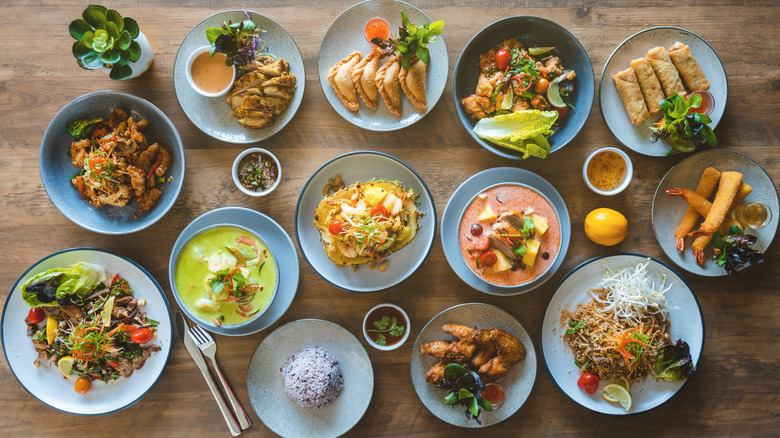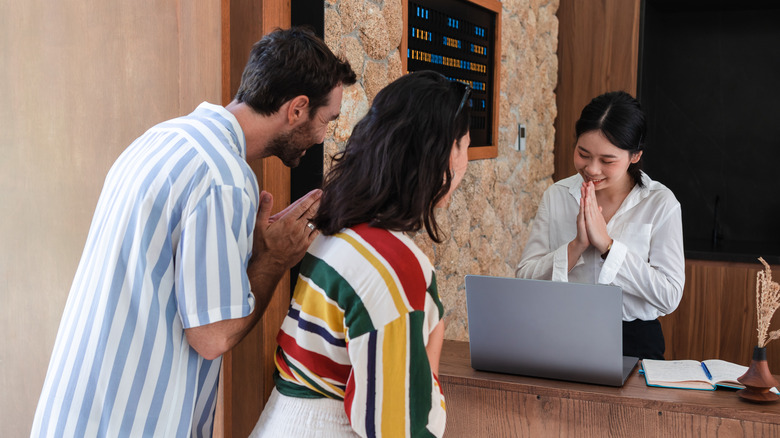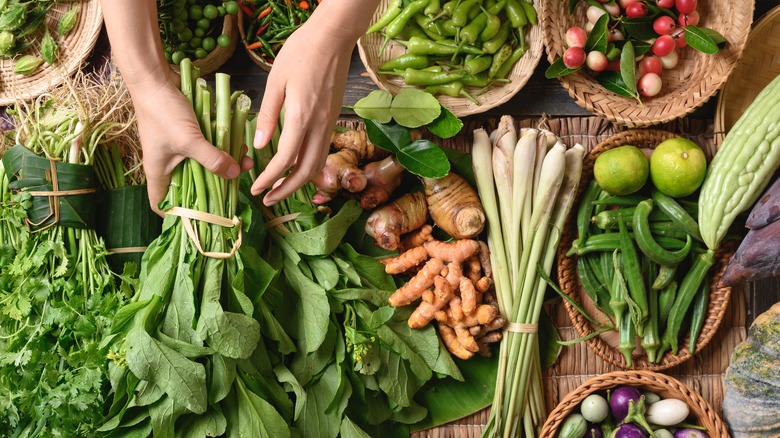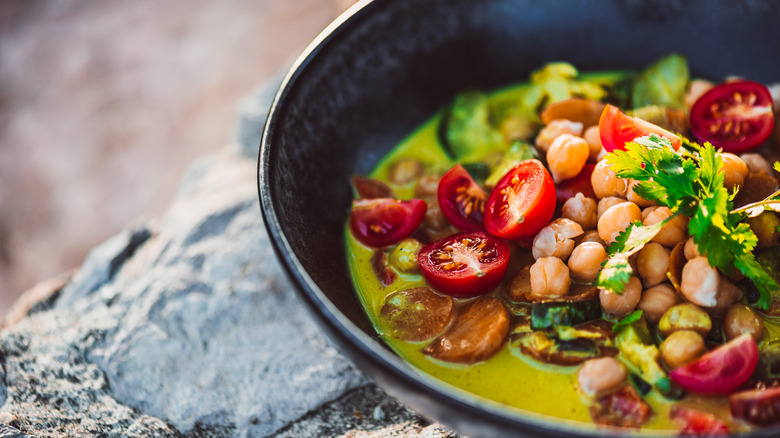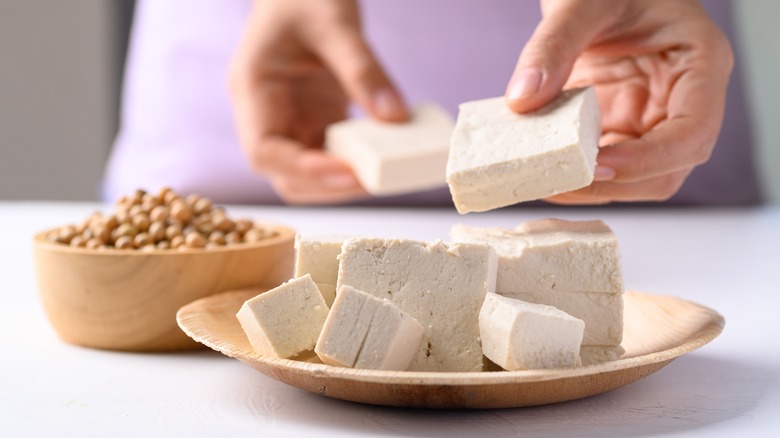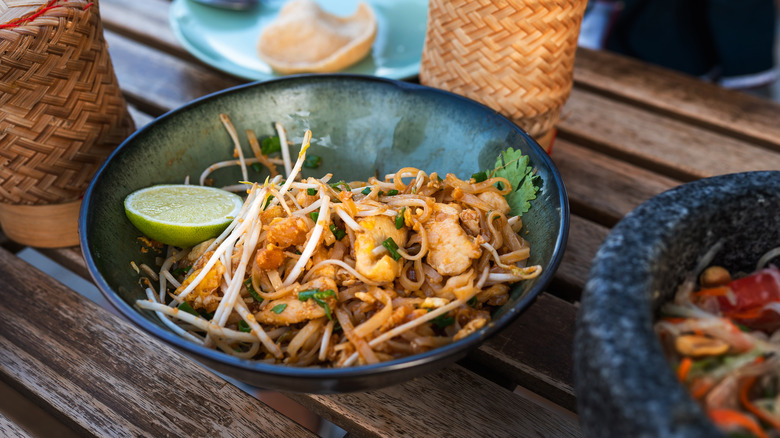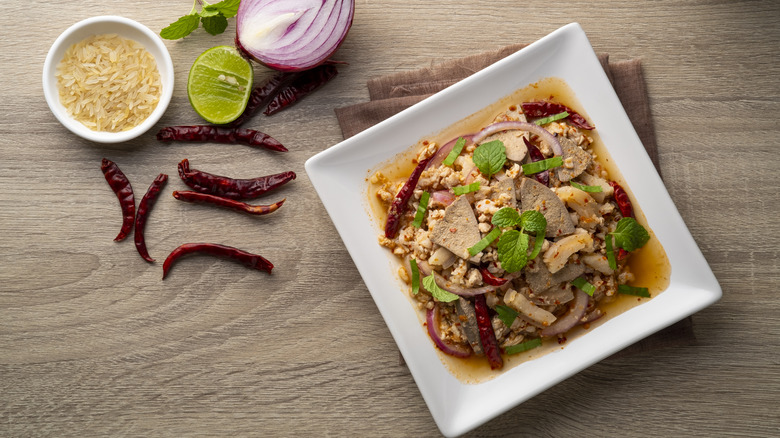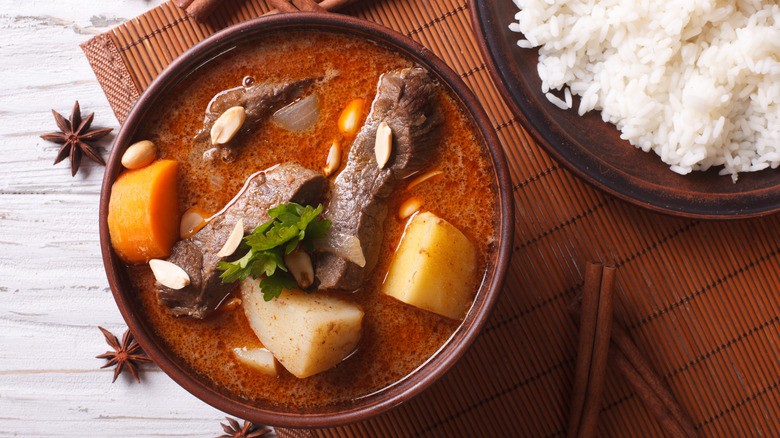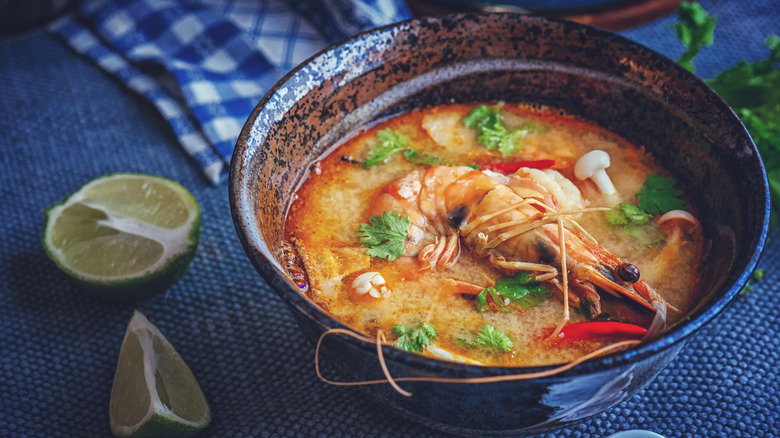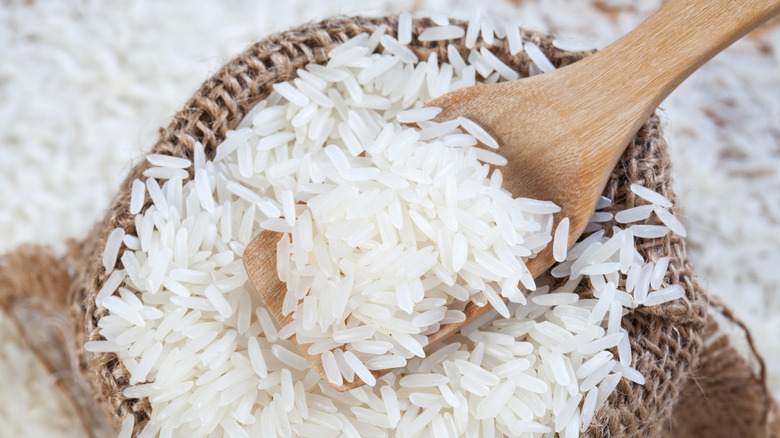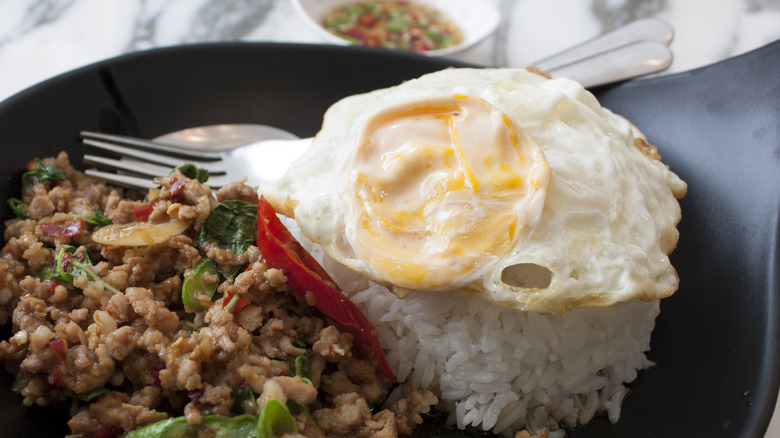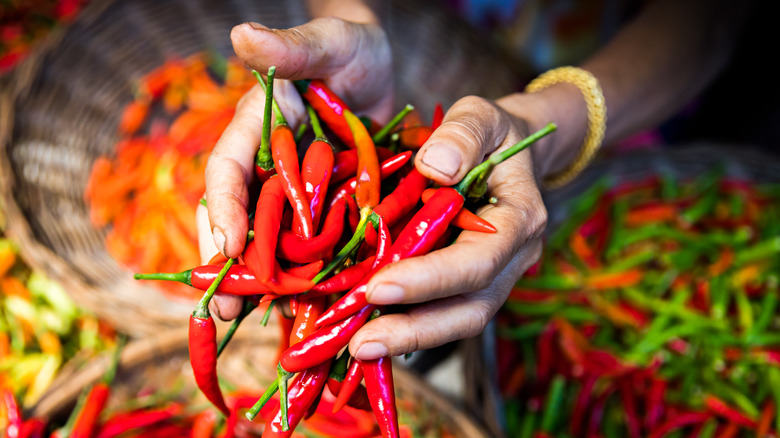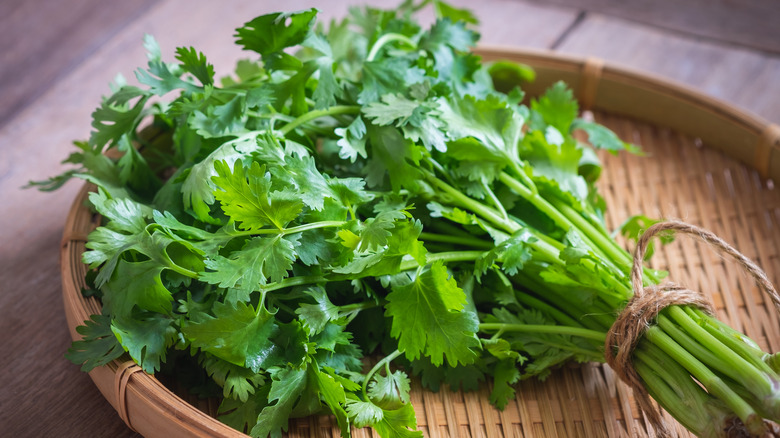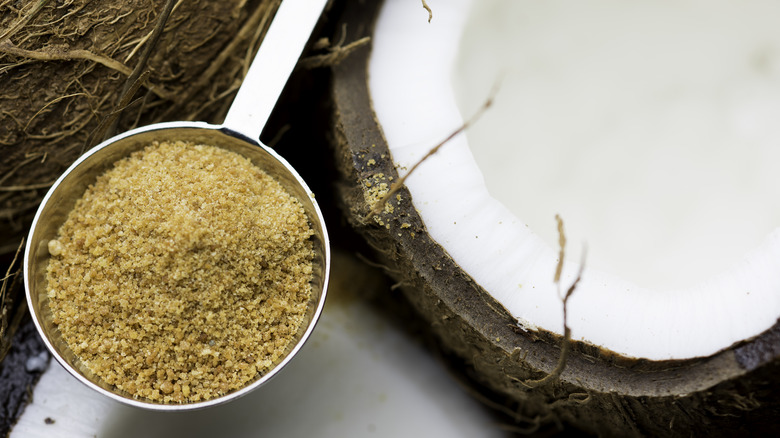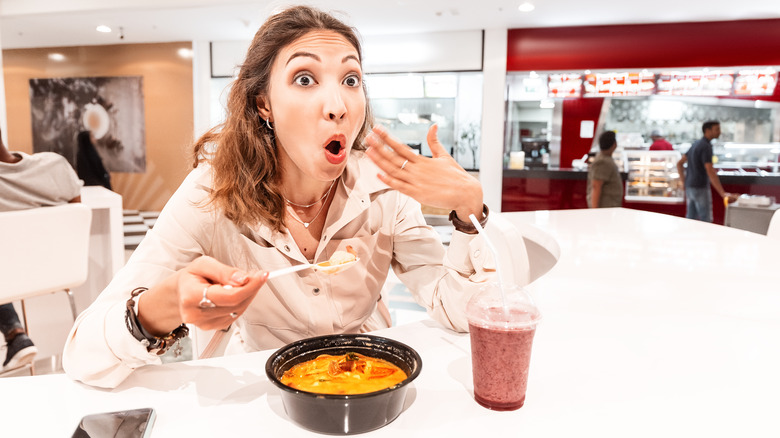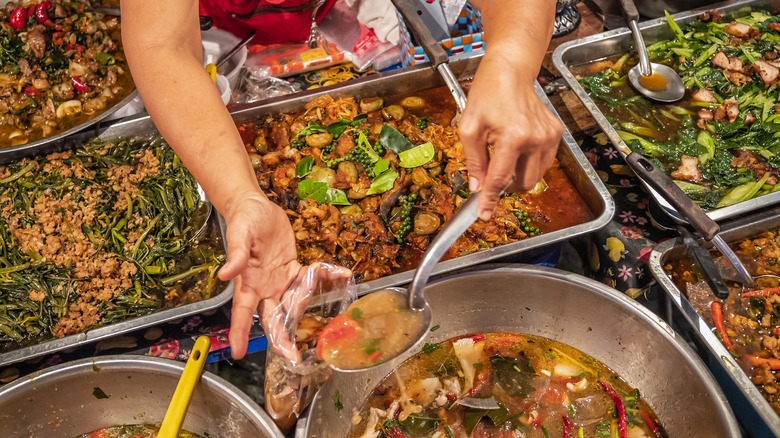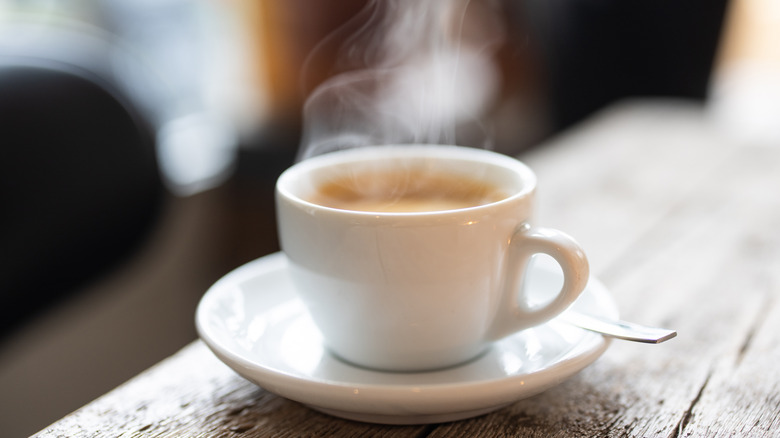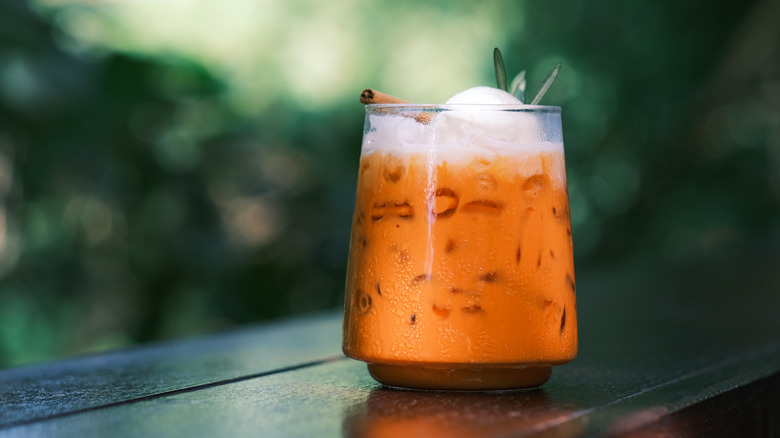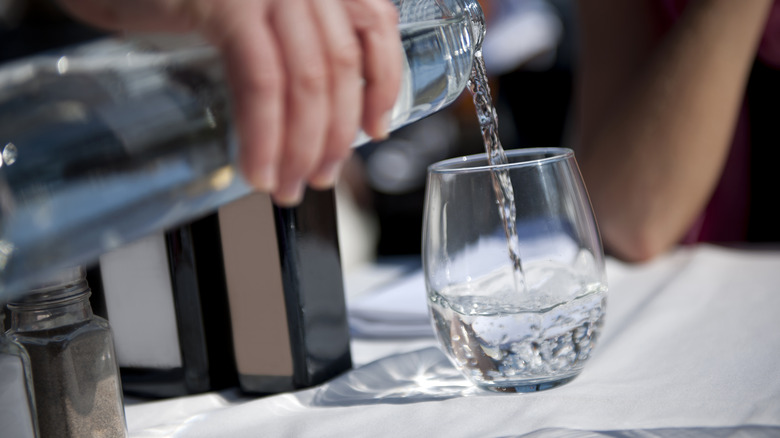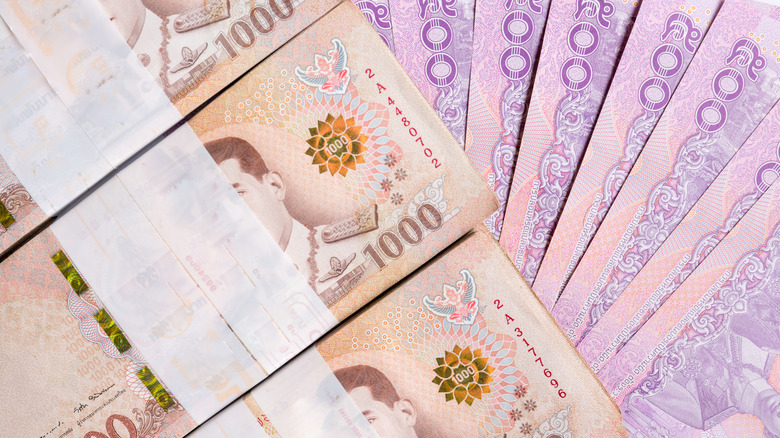24 Essential Words And Phrases To Know At A Thai Restaurant
When it comes to international food, the more authentic the better — in our experience, this goes double for Thai food. However, authentic international restaurants tend to come with a language barrier, especially if you're lucky enough to visit the country in person. To make things even trickier, Thai is a notoriously complex language. Not only does it use a completely unique alphabet, but it's also a tonal language, meaning a word can have up to five different meanings depending on the tone you use.
Learning a few essential words and phrases in Thai will make you feel more confident in trying out bona fide Thai restaurants while making sure you can request food and drink the way you like it, which is especially important with a cuisine that's well-known for its intense flavors and potent spice. Aside from making it easier to order and adapt your favorite Thai dishes, you'll absolutely delight your hosts if you make the effort to communicate in their mother tongue.
The phrases below are enough to cover almost all of your bases, and we've spelled them out phonetically so you won't have to worry about deciphering a brand-new alphabet. Don't worry too much about the tones for now, even with imperfect pronunciation, a Thai speaker will know what you're trying to say.
Hello — Sawadee ka/krap
The first phrase you'll need to know is the simple Thai greeting, "sawadee." However, the Thai language has an interesting feature that English doesn't, called a politeness particle.
Effectively a way of showing courtesy to whomever you're speaking to, women will add the word "ka" to the end of a phrase or sentence, whereas men use "khrap." Men will also commonly drop the "r" sound in less formal situations, so pronouncing "khrap" as "kup" is also acceptable. While there are situations when adding these aren't necessary, it's no big deal if you do and it's better to be over-polite than to come across as too direct.
How are you? — Sabai dee mai?
Thailand is known as the land of smiles due to its exceptional friendliness and hospitality. Admittedly, part of this reputation comes from a cultural trait of "saving face" and putting on a smile even when you want to scream — but that doesn't take away from the fact that you'll generally find Thais are very courteous. "Sabai dee mai" – no ka or khrap necessary — roughly translates to "How are you?"
Technically, "sabai" means comfortable, so you can answer with "sabai dee ka/khrap" if you're doing well. In Thai, you can also repeat words to emphasize their meaning, so "sabai sabai" means you're fantastic. On the flip side, "mai sabai ka/khrap" means you're not okay.
Vegetarian — Mang sa wirat
It's fair to say that not every cuisine is vegetarian-friendly, and you'll be met with confusion if you ask for a meat-free dish. Fortunately, this is far from the truth when it comes to Thai food. Many Thai dishes are somewhat modular so you can easily switch out meat for veggies or tofu in most cases if you know how to ask.
The phrase for asking if a dish is vegetarian is "mang sa wirat," which translates more literally to "no meat/seafood." If you are a vegetarian, be aware that most Thai dishes contain fish sauce, oyster sauce, or shrimp paste, and even if you ask for no meat, these ingredients might still be present.
Vegan — Jey
As with most cuisines, vegan options are becoming more common in Thai restaurants, although mostly in higher-end restaurants. Thais don't really have a word that translates to vegan, but the closest would be "jey."
"Jey" is a traditional Eastern diet that's void of most animal products, except honey and oyster sauce, and is somewhat adjacent to veganism. The downside is that the "jey" diet takes the "cruelty-free" aspect even further than veganism, dropping critical ingredients like garlic and onion due to their plants being killed when the vegetables are harvested.
Tofu — Tao-hu
In many Southeast Asian countries, tofu is seen as a staple food thanks to its relatively low cost and high protein content, and Thailand is no exception. As almost every Thai restaurant will have tofu on hand, you can simply say "tao-hu" after the dish name to substitute the meat.
Bear in mind that the tofu used in Thai cooking likely won't be marinated or heavily flavored, so it's best to opt for dishes that are extra flavorsome and complement the texture of tofu, such as Pad Thai with crunchy peanuts or Pad Kra Pao with fresh Thai basil.
Chicken — Gai
One of the unique features of Thai food is that you can modify most dishes by swapping different ingredients in and out. If you've been to a Thai restaurant before, you'll notice that a lot of the menu options will ask you to choose your preferred meat or seafood. The most common (and cheapest) option is chicken, or "gai" in Thai. If you're trying out a dish for the first time and aren't sure which meat option to go for, you can't really go wrong with chicken as it goes great with pretty much every Thai curry, especially green and red curries.
Pork — Moo
After chicken, pork is the next most popular meat you'll find in Thai dishes. To make things slightly confusing, the Thai word for pork is "moo," although we find that actually makes it easier to remember.
Minced pork is delicious in Laab, a type of meat salad originating in Laos but hugely popular in eastern Thailand as the mint and scallions cut through the pork's moderate sweetness. It's also the go-to meat choice for satay — skewered meat with peanut sauce. While the latter is technically Indonesian in origin, you'll find satay on the menu at almost every Thai restaurant you visit.
Beef — Neua wua
The Thai word for beef, "neua wua," is a bit of a mouthful and the ingredient is a bit less common in Thai cuisine than chicken or pork, and it's usually a little more expensive. Having said that, there are some dishes that you absolutely need to try with beef.
Massaman curry — a coconut milk curry made with peanuts and potatoes is probably the most famous and if you manage to find a Thai restaurant that specializes in northern Thai cuisine, Khao Soy is a curried noodle soup that's to die for. The best part about Thai beef dishes is that although they use lesser cuts of chuck beef, the higher fat content means it can be slow-cooked in soup or curry to melt-in-your-mouth perfection.
Shrimp/prawn — Goong
The popularity of fish dishes varies in Thailand depending on where you are — in the north and east of the country, you won't find much in the way of seafood, although this changes if you were to head down south or to one of the country's many stunning tropical islands. On the other hand, prawns – "goong" — are used as an ingredient up and down the country, often included along with other meat.
The best shrimp-based Thai dish has to be Tom Yum, a hot and sour soup made with lemongrass and kaffir lime leaves that's perfect when the weather outside is particularly un-Thailand-like.
Rice — Khao
To say that rice – "khao" in Thai — is popular in Thailand would be something of an understatement. In fact, nearly 2.5 million acres of land in the country is dedicated to rice production and Thailand's jasmine rice has been declared the best in the world on more than one occasion.
"Khao" is a useful word to know — while you might assume rice will come with your dish of choice, this often isn't the case because Thai-style dining is a sharing affair and almost never involves each person ordering their own dish. "Khao" will get you a portion of steamed rice, whereas "khao niao" is sticky rice, and "khao pad" is fried rice.
Fried egg — Khai dao
While you might think of fried eggs as a breakfast-only food, the Thais definitely don't see it that way. As Thai dishes are relatively low in protein compared to other cuisines, many Thais will order non-soup or curry dishes like Pad Kra Pao a "khai dao" or on top.
Not only will an egg or two boost the protein content of your meal, but egg yolk tastes incredibly delicious mixed in with rice and a liberal dash of salty soy sauce.
Spicy — Pet
Thai food is infamously spicy. In fact, a fair case could be made that it's the spiciest cuisine on the planet thanks to the abundance and variety of chilies used in Thai recipes, and their love of hot condiments, such as Klom Klom. Most Thai restaurants will turn down the heat for "farangs" (non-Thai people) as Thai-style levels of heat have been known to shock some of the most ardent spice lovers.
The Thai word for spicy is "pet," and you can use the word as a question to get an idea of how hot a particular dish might be.
Cilantro — Pak chee
Thanks to its citrusy, peppery piquancy, there are few Thai dishes that will arrive at your table without a liberal handful of cilantro scattered across the top, which is great if you love the stuff. However, not everyone's feelings towards the pungent herb are quite so fond. For some, cilantro has an off-putting soapy taste, something that researchers at 23andMe believe may actually be a genetic trait.
The Thai word for cilantro is "pak chee," which will come in handy if you can't stand the stuff and want it kept well away from your meal.
Sweet — Waan
While we tend to avoid generalizations, it can be said that a lot of Thais have a bit of a sweet tooth. You'll find sugar as a condiment on the table at almost every traditional Thai restaurant, their juices and fizzy drinks tend to be sweeter than their Western equivalents, and you might be shocked to learn how much sugar is in your Thai curry.
Coconut or palm sugar are used liberally in Thai cuisine and contribute a lot to the flavor profile of many drinks and dishes; however, if you're watching your diet you might need to ask your server to ease up on the sweetness, or "waan" of your order.
No/not/without — Mai
Although it's handy knowing the Thai words for ingredients, spice, and sweetness, it's not much use without a modifier to indicate how much or little you want of each. "Mai" in Thai can mean both "no," "not" or "without," and you can add it in front of another word to get your point across.
For example, if you love Thai food but you struggle when it comes to spice, "mai pet" will let your server know to go easy on the chilies. Similarly, "mai waan" will let them know to tell the chef to skip the sugar, and "mai pak chee" will keep your dish free from cilantro.
No/not/without — Nit noi
Thai dishes can have potent heat and powerful flavors but just because the recipe might be a little extreme for your taste, it doesn't mean you can't ask the chef to adjust the meal to your preferences.
Add the phrase "nit noi" after an ingredient or flavor if you want your meal with less of something. For example, "pet nit noi" will mean your dish will still have a spicy kick without blowing your head off.
Special/extra — Pi set
If you're feeling extra hungry, you might want a larger meal or more of a particular ingredient, and the great news is most Thai restaurants are more than happy to accommodate, even if they don't list extras or larger meals on their menu.
"Pi set" technically means "special" in Thai, and if you ask for a special meal, it'll be assumed that you want a larger portion. If you're after more of a specific ingredient, you can just say "pi set" in front of the ingredient you want more of. So, for a Pad Thai with extra chicken, "Pad Thai pi set gai" will do the trick.
Hot — Rohn
While Vietnam is historically the Southeast Asian country with the biggest coffee reputation, in part due to its colonization by the French, Thailand's coffee culture is hot on its heels. Thais started growing coffee in the late 1970s as part of a royal initiative to provide an alternative source of income for the country's opium farmers in the Golden Triangle region, a motive that shouldn't need questioning.
Initially, Thailand focused on exporting lower-quality Robusta beans for use in mass-produced instant coffee but has begun producing high-grade Arabica for the home market and you'll now see decent espresso machines in many Thai restaurants and cafés. Having said that, Thais are big fans of iced coffee so if you order, say, an Americano, it can sometimes be a coin flip whether it comes out hot or cold. For hot drinks, use "rohn" to make sure you get exactly what you ordered.
Cold — Yen
If you're after an iced coffee to cool off add "yen" after your order to make sure you get the iced version, for example, "Americano yen ka/kap."
"Yen" also works if you want ice in a soft drink, although it's worth mentioning that while "yen" can be used to mean cold in most circumstances, it's not used if you're talking about the weather.
Drinking water — Naam plao
Needed for spicy meals, in-country tap water isn't drinkable — but the weather is hot and you need to stay hydrated. This phrase specifies drinkable water.
Given the spice factor of Thai food, you'll definitely want some water – "naam plao" – to quench the heat. Some of the more authentic, hole-in-the-wall-style Thai restaurants feature a self-service station for water with ice available, whereas others might require you to ask your server.
Specifically, "naam plao" means drinking water which is important to get right if you're in Thailand as the tap water isn't considered potable and you might end up on the wrong end of a stomach bug.
Thank you — Khob kun ka/krap
We know how important it is to mind our Ps and Qs in English and Thai is no different. Well, it's slightly different in the sense that there is a Thai word for please but it's not used in the same context as other English, so you don't have to worry about that one.
Thank you, however, is used heavily and can be used in any situation. To thank your server, simply use the phrase "khob kun ka/krap." If you want to be extra polite, you can add the word "mak" — meaning "very" — after "kun."
How much? — Tao rai ka/krap
We're used to most restaurants featuring all of their prices on their menu but it's not uncommon to visit a Thai spot and find the prices aren't listed. Even if they are, you might want to know how much a "pi set" order will set you back.
"Tao rai ka/krap?" means "How much?" or "What's the price?" and works just as well in food outlets as it does in the street markets. However, bear in mind that while the Thais are more than game to haggle over price in the market, the same doesn't apply to street food stalls or restaurants.
The bill, please — Check bin ka/krap
When it's time to pay up, "Check bin ka/krap" will let your server know you're ready for the check. Not only is this one of the easiest phrases to remember thanks to the fact the word for "check" in Thai is one of the few that's identical in English, but we feel it beats the classic hand gesture to the server that we've all been guilty of using when we don't have a grasp on the local language. You can also use the phrase "kep tang" as an alternative, although it's a lot more formal and considered a little outdated these days.
Delicious — Aroy
If you're after a phrase that will make you a Thai restaurant's favorite customer, endearing you to the whole staff, "aroy" will do the trick. Not only do Thais adore food, but they also take great pride in their ability to delight their patrons with their cooking. Once you've finished dining, the word "aroy" — meaning "delicious" — is guaranteed to put a huge smile on your server's face.
If you want to take "aroy" to the next level, you can add "mak" (very) afterward to say "very delicious." Remember earlier when we said you can repeat words to emphasize their meaning? If you still feel that you haven't been able to convey just how mind-blowingly tasty your food was, "aroy mak mak" will do the trick.

